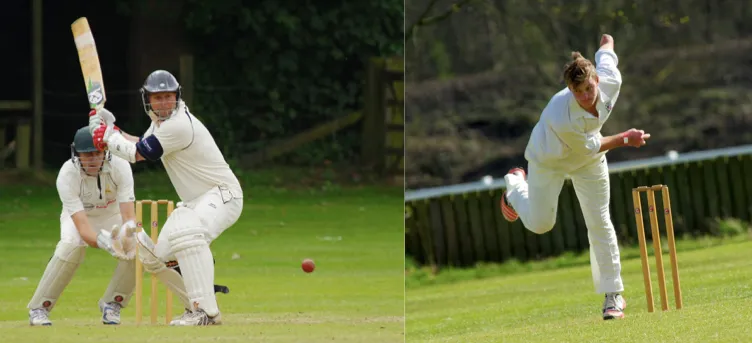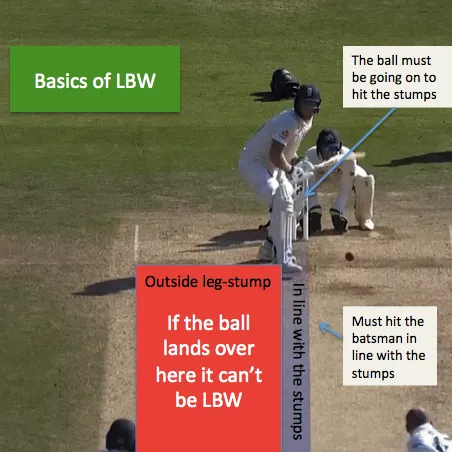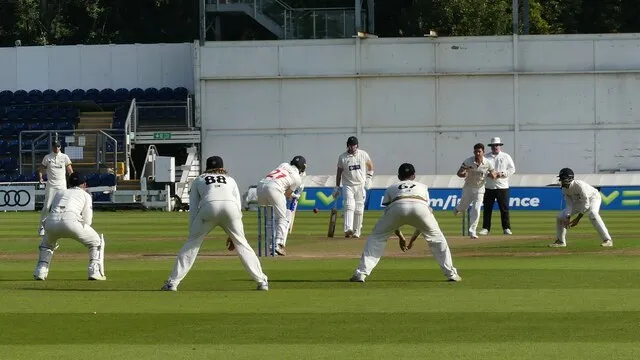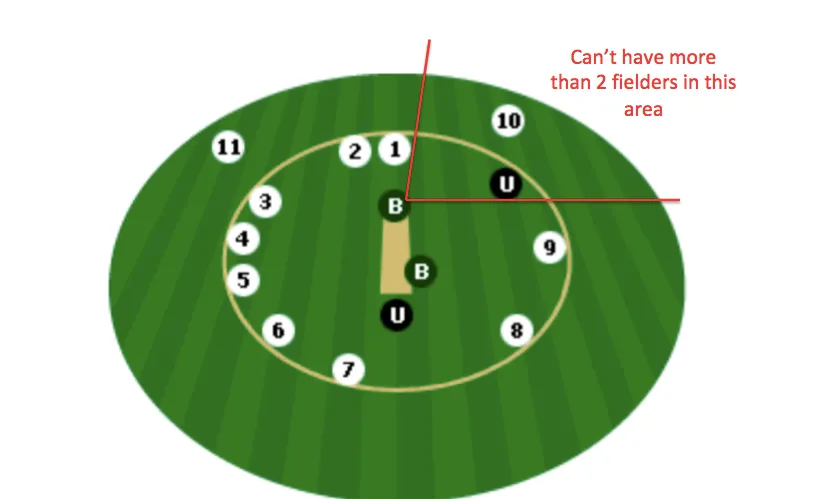@cryptoandcoffee has thrown down the gauntlet for me to try and explain the laws of cricket as part of the current writing series #sportingrules. You can find out about all the current writing topics on Sportstalk on his blog here.
It's also an opportune moment to explain the game of cricket to people who perhaps don't follow the sport closely because in the next few months you'll likely see me post about it A LOT.
During the recent lockdowns, most people spent their free time cooking or learning an instrument but I spent it building a statistical database for T20 cricket that covers 3,567 matches, nearly 2000 players and currently contains over 16 million pieces of data and counting. Yes, I know I'm a boring bastard but as the 10cc song, Dreadlock Holiday goes, "I don't like cricket, I love it".
I'll be unleashing all that data into detailed match previews of the upcoming Indian Premier League (IPL) which to explain to no cricket lovers has become a little bit like the Champions League of cricket and is one of the most watched sporting events on the planet. Alongside those match previews I'll be running a contest called 6 and out which will allow everyone to get involved and win some prizes along the way.
Cricket has no rules
Anyway, back to #sportingrules and the first thing to say is that cricket isn't actually eligible to be considered in this tag because it doesn't have any rules!
No indeed, instead it has laws!
Therefore, whatever you may or may not learn about the game of cricket in the rest of this blog, if you want to try and engage in a conversation with a true cricket fan, never ever refer to the "rules of cricket" only ever call them "laws"
Three for the price of one
Perhaps one of the aspects that makes cricket so confusing to those outside the sport is the fact that it has 3 distinct formats.
There is the Test Match format in which games can take up to 5 days to complete and while in my opinion this is still the most enjoyable form of the game and the one I hold the greatest passion for, it’s entirely understandable why someone without an existing interest in cricket would struggle to get their head around such an epic sporting event let alone stay engaged with it over that long a period.
Then there is the One-Day format which as the name suggests is a match which takes 1 day to complete. Sides are given a limited amount of time to score as many runs as they can with the side with the most runs being the winner. Simple enough, but with games still taking around 7 hours to complete it's no wonder that even an ardent sports fan might be put off having to invest such a lot of time and effort to be able to get a grasp on what is going on.
Finally, we come to the newest and most accessible format of the game which is Twenty-20 or as it's often now known T20 (not to be confused with a model of terminator). These are fast, fun, action-packed games that can be completed in a couple of hours and which are already responsible for drawing new audiences towards the game of cricket.
Certainly, if you are interested in learning more about cricket then T20 represents the kiddies pool, full of slides and inflatable toys compared to the seemingly endless ocean that is Test Match cricket.
T20 has fairly exploded onto the scene throughout the 21st-Century, culminating in the formation of several big-money franchise leagues across the globe. Chief amongst them is the Indian Premier League (IPL) which will begin later this month and attracts the biggest names in the sport who can now earn on a par with likes of NFL, Soccer and Basketball stars.
Let's get stuck into some cricketing basics then that would allow you to understand the basics of a T20 match...
Player Roles
Cricket is played by 2 teams each with 11 players and the roles of those players can further be broken down as follows

A batsman and keeper on the left and a bowler on the right royalty free images from pixabay
.
Batsman - These are the guys who are responsible for scoring points which in cricket are known as runs. Runs are generally scored when the batsman hits the ball but we'll cover that in more detail below.
Bowler - These are the guys who are responsible for stopping the batsmen scoring runs or better yet getting them out (again we'll look at how they do that later).
In essence, they throw or as we say in cricket bowl the ball at the batsman. When bowling the ball in cricket a bowler must not bend his arm more than 15 degrees at the elbow hence the reason why we don't use the term "throw" or "pitch" as to do so in cricket is against the laws.
All-rounders - While some players specialise as a batsman or bowler others are capable of doing both i.e. they are all around players.
However, in cricket, you do not need to be named as a specialist batsman or bowler prior to the game starting. In fact, in some matches, all 11 players will need to bat but you can generally assume that the guys who are given the first chance to bat are the best batsmen whereas those who come in later and bat in positions 9, 10 and 11 are probably in the side as specialist bowlers.
Similarly with bowling, in theory, any player can bowl but in reality, only 5-7 players on a team will have the skills capable of bowling at this level.
Fielders - All 11 players are required to field for their side during the game. There are many specialist positions and strange sounding names for those positions that I won't go into now, suffice to say that fielders are there to catch the ball and stop batsmen scoring runs.
There is one specialist fielding position which is crucial to understand and that is the wicket-keeper (often just referred to a the keeper). You'll see him standing directly behind the batsman and wearing a pair of large gloves. He is the only player on the pitch allowed to use gloves to catch the ball and his role is very similar to that of a catcher in baseball.
What is an "over"?
Before going on to consider how to score in cricket, it's probably worth understanding the basic units with which the game is measured. The smallest unit within cricket is a ball i.e. when the bowler runs up and bowls it to the batsmen that is 1 ball.
The below video demonstrates 1 ball in cricket.
A bowler has to do this 6 times to complete an over i.e. 6 balls = 1 over.
As noted above, T20 is a "limited overs" format so there are only 20 overs available to each side or to put it another way 120 balls (20 x 6).
For a cricket game this is a comparatively short match when you consider that a Test Match can contain a whopping 2,700 balls. The aim of shortening a match is to ensure faster scoring and on average teams will look to score 8 or 9 runs every over in a T20 game, although as the example below shows, sometimes they score much higher!
Now at this point, some of you may be asking the question as to why having just told you that there are 6 balls in the over does this particular clip show a bowler bowling 8 balls? Well that's because they need to be 6 legal balls and the first 2 balls you see in the highlights weren't!
To understand a little bit more about what is a legal ball and what isn't let's look at the dimensions of a cricket pitch or what we might commonly term a cricket "wicket".
No balls
There are several reasons that a ball might be called a no-ball and luckily enough 2 of those reasons occur in the last video clip.
Ball doesn't bounce and is above waist height of the batsman - This is what happens in the very first ball of the clip above. The bowler accidentally (sometimes not) bowls a dangerous ball at the batsman and in fact if you listen carefully you'll hear the batsman give a little yelp as it goes past him and the bowler then apologises .
Bowler doesn't have some part of his front foot behind the popping crease when he bowls the ball - this what happens with the 2nd ball in the clip above. To stop bowlers just running to within an inch of the batsman's nose and bowling the ball, there are "creases". The bowler must let go of the ball while some part of his foot is behind the popping crease. A no-ball can also be called if a bowler doesn't have some part of his foot within the "return crease" too i.e. they can't just bowl the ball from some weird angle, but it's pretty rare to see a no-ball called for this.
There are in fact lots more reasons for a no-ball to be called but many of them are at best unusual to be see while others are very rare indeed. You can read the full laws here
It's also worth noting that a batsman can't be given out to a no-ball except run-out (see below) and that the bowler has to bowl the ball again which is why we see 8 balls in the video clip above.
Lastly, at least in T20 and most other "limited overs" cricket, a front foot no-ball (the 2nd type above) also results in the batsman being given a free hit. This means that even when the extra ball is bowled the batsman still can't be out (except run-out)! In other words, bowling a no-ball is something that you really don't want to do!
Wides
A further example of an illegal delivery can be seen in the clip below and it's known as a wide. Quite simply, it's when a bowler bowls a ball that the batsman can't reasonably be expected to hit because it's either too far either side of him or above his head.
It's worth noting that in T20 cricket you'll usually see what are called 'wide lines' either side of the batsman. These don't actually exist within the laws of the game and are more a 'guide' for the umpires.
Just like with a no-ball, when a wide is bowled, the bowler has to bowl it again.
Limit on the number of overs a bowler can bowl
It's also worth noting that within these limited overs games bowlers are restricted to bowling a certain number of overs each. In a T20 game one bowler can only bowl a maximum of 4 overs so much of the tactics both pre and during the game revolve around when each bowler bowls and for how long given that they can't bowl just keep bowling even when things are going well...
Scoring runs in cricket
There are always 2 batsmen batting in cricket at any one time.
1 batsman is facing the bowler who bowls the ball to him while the other waits at the other end. You'll commonly hear them referred to as the striker and the non-striker.
The easiest and most common way to score runs is for the 2 batsmen to change ends. In the clip below, you'll see the batsman hit the ball and he and the non-striker change ends 4 times. This means that they've scored 4 runs
It's quite unusual to see batsmen run more than 4 times simply because of the dimensions of the ground and how fast a human being can run. The most important thing to remember and as we'll see below is that both of them need to get back behind the popping creases at their relevant ends before the fielder throws the ball in (see run-out below).
The other, faster way for batsmen to score runs is to hit the ball too or beyond the edge of the playing area usually called the boundary.
If the ball hits the ground on the way to also hitting the boundary then the batsman is given 4 runs as shown in the example below.
If the ball hits the boundary on the full (without bouncing) or the ground beyond the edge of the boundary then it's given as 6 runs. As you can see from the clip below, some of these boys are pretty powerful hitters and can easily clear 100 metres with a single swing of their bat.
Anytime the ball hits the batsman's bat or his glove which is holding the bat then the runs scored are credited to him. However, there are other ways for the team to acquire runs that aren't as a result of the batsman hitting the ball. These are referred to as extras
Extras
Good news is we've already covered a couple of these.
No-balls - as needing to bowl an extra ball no -balls also cost extra runs. Usually 1 run is added to the batting team's score but for certain tournaments the penalty can be 2 runs
Wides - again, as well as the extra ball 1 or 2 runs are added to the batting team's score
Byes - If the batsman fails to hit the ball but the 2 batsmen successfully change ends or the ball goes to the boundary for 4 or 6 then these runs are awarded to the team total as byes
Leg-byes - If the ball hits the batsman anywhere except his hand that is holding the bat and again the batsmen either successfully change ends or the ball goes to the boundary for 4 or 6 these runs are awarded to the team total as leg-byes.
Now that you know how teams score runs in cricket it's probably worth having a look at a basic scorecard so you can see how all these factors come together to contribute to the total score. Here's a scorecard from a T20 match as an example

How do you get batsmen out in cricket?
There are in fact 10 ways to get a batsman out in cricket, 5 of which are very common and which we'll look at below, the other 5 are very rare and you could spend your entire life watching the game and never see some of them occur! If you want to read up on these then you can do so here
Also worth noting in cricket unlike baseball, there is no such thing as a double play i.e. if a batsman is out caught, the other batsman can't then be run out, etc.
In T20 and 50 over cricket a batsman only gets one chance so once they are out then they are out while in Test Matches each team gets 2 innings.
The ultimate aim for the bowling side is to get 10 of the opposition batsmen out. If they achieve this then the innings is finished regardless of how many overs are left still to be bowled.
Here's how a batsman gets out...
Bowled
This is where the bowler manages to hit the stumps (the 3 pieces of wood) with the ball. That is pretty much it - hit the target and that's the end of the batsman's innings, let's see it in action
The only other thing to note here is that for a batsman to be out bowled the ball must knock at least one bail onto the ground. Just to rewind a bit, the stumps which we mentioned above are the 3 pieces of wood sticking out of the ground, they have 2 smaller pieces of wood that sit on top of them called bails.
In the clip above, there is no doubt that the ball hits the stumps (there's bits of wood flying all over the place) but occasionally the ball might pass a little bit closer to the stumps and it's not quite so conclusive. If the ball hits the stumps but at least 1 bail doesn't fall, it's not out...
Caught
Again pretty self-explanatory, a batsman hits the ball in the air either off his bat or a glove that is holding the bat and if a fielder can catch it before it hits the ground then they are out caught.
Especially when watching T20 it's also important to ensure that the fielder is never in contact with the boundary line or ground beyond it while trying to catch the ball. If he is then it's 6, if he can keep of the floor and push it back on the right side of the boundary he (or a teammate) can take the catch. You'll see Sheldon Cottrell executes a good example of this in the clip above.
Run Out
As mentioned above, batsmen can score runs by running from one end to other. However, they must ensure that they are back inside the popping crease before the fielding team collects the ball and hits the stumps. If they are short of their ground then a batsman is run out.
Worth noting that a run-out is not credited as a wicket to the bowler and is instead credited to the team as a whole.
Stumped
Unlike the bowler, the batsman is free to stand beyond the popping crease but in doing so they run the risk of being stumped. It's a little bit like a run-out i.e. if they don't get back behind the line in-time and the keeper breaks the stumps then they're out.
Being out stumped only occurs when the batsman misses the ball (otherwise it's a run out) and this wicket is credited to the bowler.
Leg-Before-Wicket (LBW)
This is where things get a little more complex but in essence, if a batsman prevents the ball from hitting the stumps with anything but his bat or his hand that is holding the bat then he can be out LBW.
Of course, the basic dimensions of both a man and the stumps mean that it is usually his leg or perhaps his foot that gets in the way of the ball hitting the stumps hence it being known as leg before wicket but in theory it can hit any part of the body.
The LBW law is a tricky one for beginners to get their head around and here's a basic diagram to help explain a couple of the points below

Here's what needs to be considered when deciding if a batsman is out LBW
Did the batsman hit the ball with his bat before it hit him? If he did, then he can't be out LBW
Where did the ball pitch (land)? The ball must pitch either in line with the stumps or outside the batsman's off stump. If it pitches outside the leg-stump you can't be out LBW.
Where did the ball hit the batsman? The ball must hit the batsman while he's in line with the stumps. The only time this part of law doesn't come into play is where the batsman is deemed not to be playing a shot at the ball i.e. they just let it hit them
Would the ball have then hit the stumps? Once all 3 of the above have been taken into consideration, then it's a case of deciding whether the ball would actually have gone onto hit the stumps.
While taking about LBW it's also a good opportunity to mention the people who officiate cricket matches and are therefore responsible for making such decisions.
In cricket, we call these guys umpires and there are 2 of them on the field at all times as well as a 3rd umpire who helps with using video technology to assist with decision making.
If an umpire wants to give a batsman out then they raise their finger. There are lots of other signals that umpires make and a few of the most common ones are below
In most high level cricket matches these days there also exists the Decision Review System (DRS). This allows both teams to challenge an umpire's decision and is very often used for LBW decisions. Depending on the format being played each team will have between 1 and 3 reviews available to them per innings. If they successfully challenge an umpire's decision they keep their review, if they don't then they lose a review. Once all reviews are lost, they can no longer challenge!
For LBW decisions, DRS uses hawk-eye technology similar to that used in tennis to track and predict the path of the ball. The below gives a good account of the DRS as well as a look at how difficult LBW decisions are to make!
Basic Tactics for T20 cricket
You could read several books on the tactics of cricket and still not see half the picture, however, because T20 is such a short game the ultimate aim of batsmen is to whack the ball as hard and as often as possible and the ultimate aim of the bowlers and fielders is to stop them doing it ideally by getting them out!
There are however a couple of tactical situations it's worth being aware of which also merge with the laws of the game.
Field Restrictions
When watching a T20 game it's tempting to wonder why all the fielders aren't just back on the edge of the boundary trying to stop batsmen hitting 4s and 6s.
Well the reason for that is they aren't allowed to!
You'll notice on a T20 cricket pitch that there is an inner circle painted on the playing surface as seen in the picture below.
During the first 6 overs of each innings, only 2 fielders are allowed to be placed outside that circle. This period of the game is known as 'The Powerplay' and is designed to tempt batsmen to try and hit up and over those fielders who are closer in. That of course means that there is some high scoring during this phase but it comes at an increased risk and therefore chance of getting batsmen out too.
The above shows an example of how a team is restricted to having just 2 fielders outside the circle in the first 6 overs. In fact, there is one other restriction when deciding where fielders stand and that is that you can't have more than 2 men standing behind square on the leg-side. Other than that, captains and bowlers are free to position their fielders as they choose provided it doesn't interfere with the bowler bowling to the batsman.
After 6 overs the fielding restrictions are relaxed and usually 4 fielders are allowed outside the inner ring. I say usually because this is one law of the game that is constantly being tinkered with and is often adapted by specific leagues and tournaments to balance advantages for batsman and bowler as well as encouraging big shots for viewer entertainment.
Winning the toss
At the start of any cricket match, the 2 captains toss a coin with the captain who chooses correctly getting the option of whether to bat or bowl first.
Traditionally in T20 games sides have preferred to bowl first simply because when it then comes their turn to bat they know exactly how many runs they need to score and the risks they need to take in chasing the opposition's total.
However, captains take into account all kinds of factors including the pitch and atmospheric conditions as well as the relative strengths of both teams when making this decision.
And that's it nearly 4000 words later and you can pretty much understand a game of cricket and its basic laws 🤣















